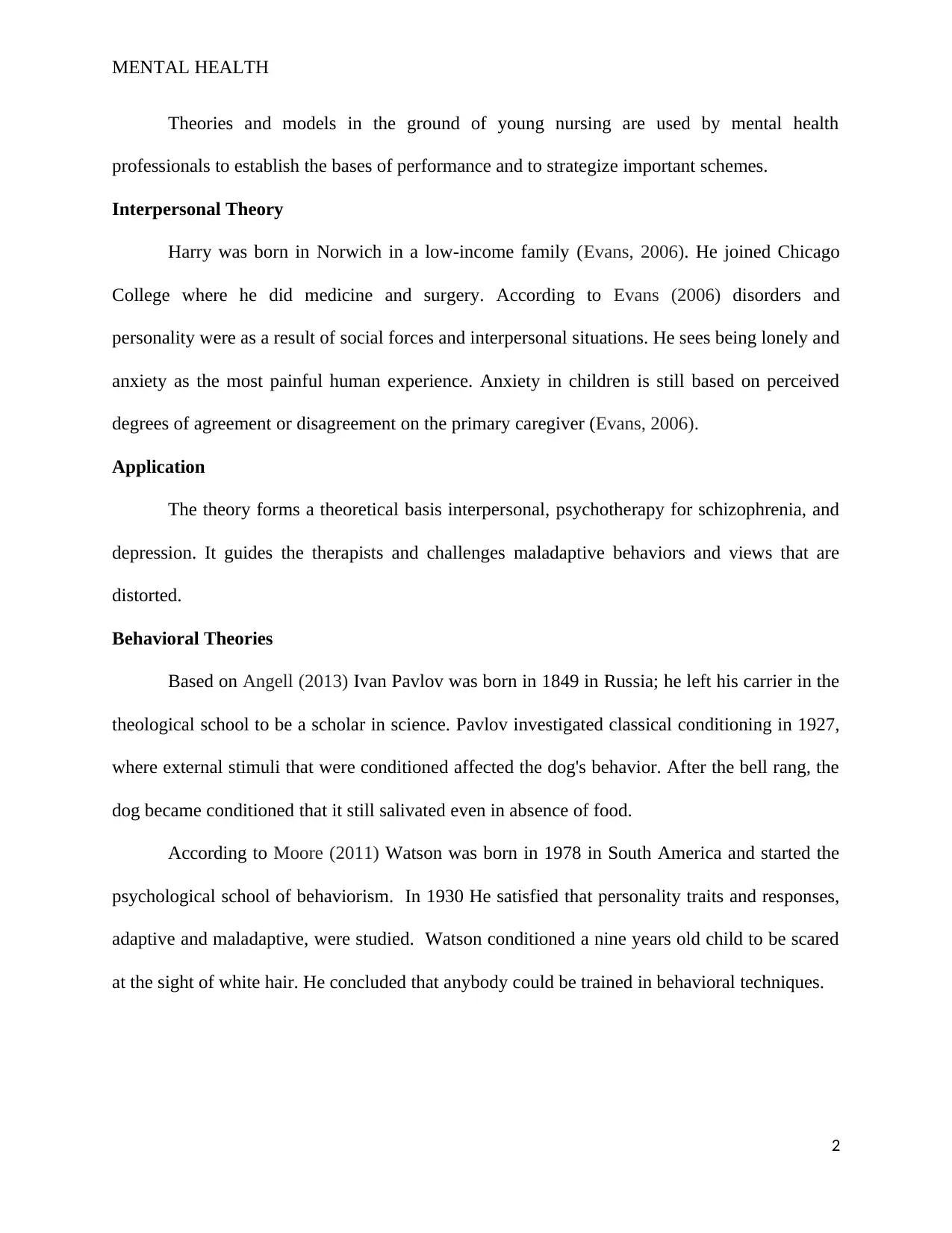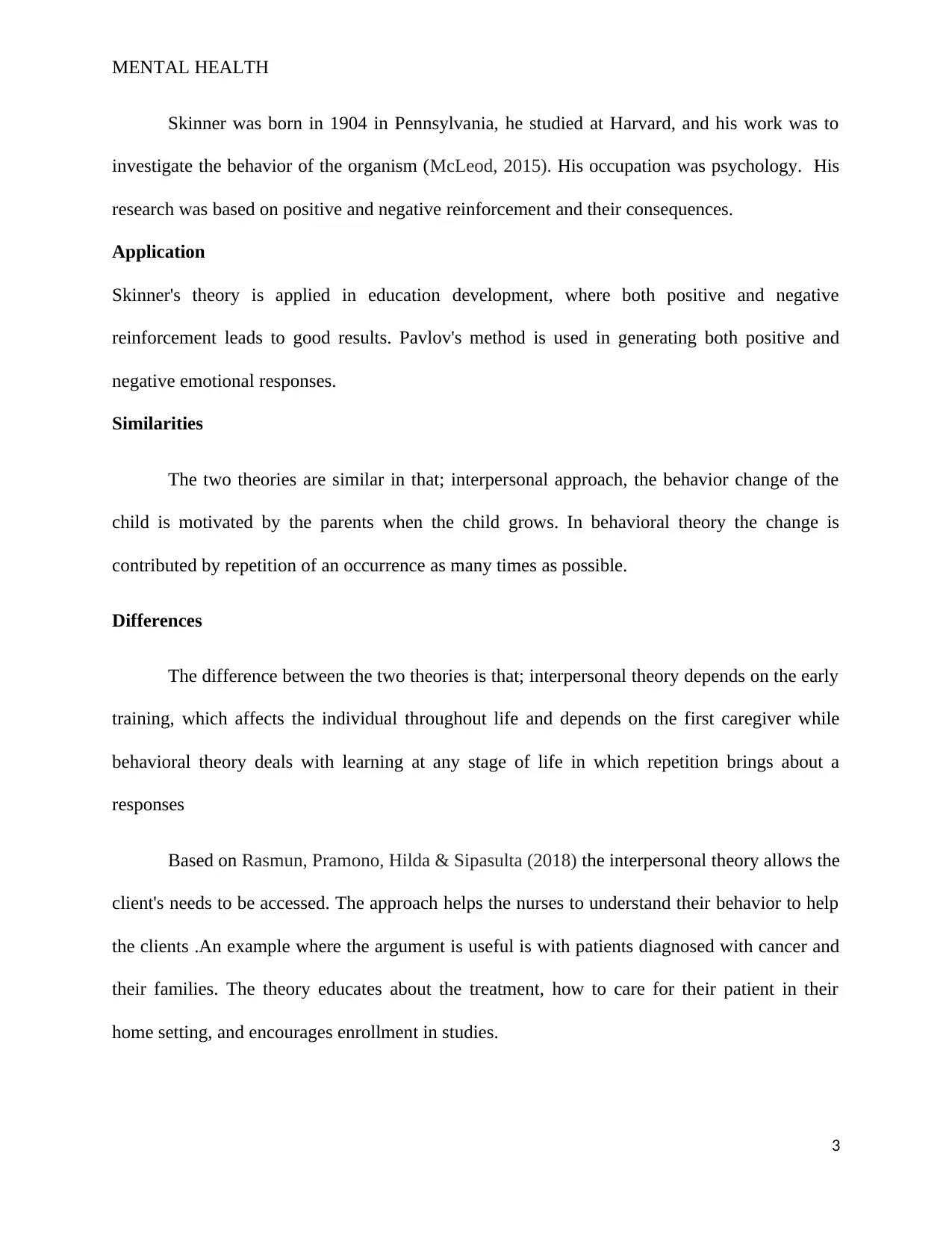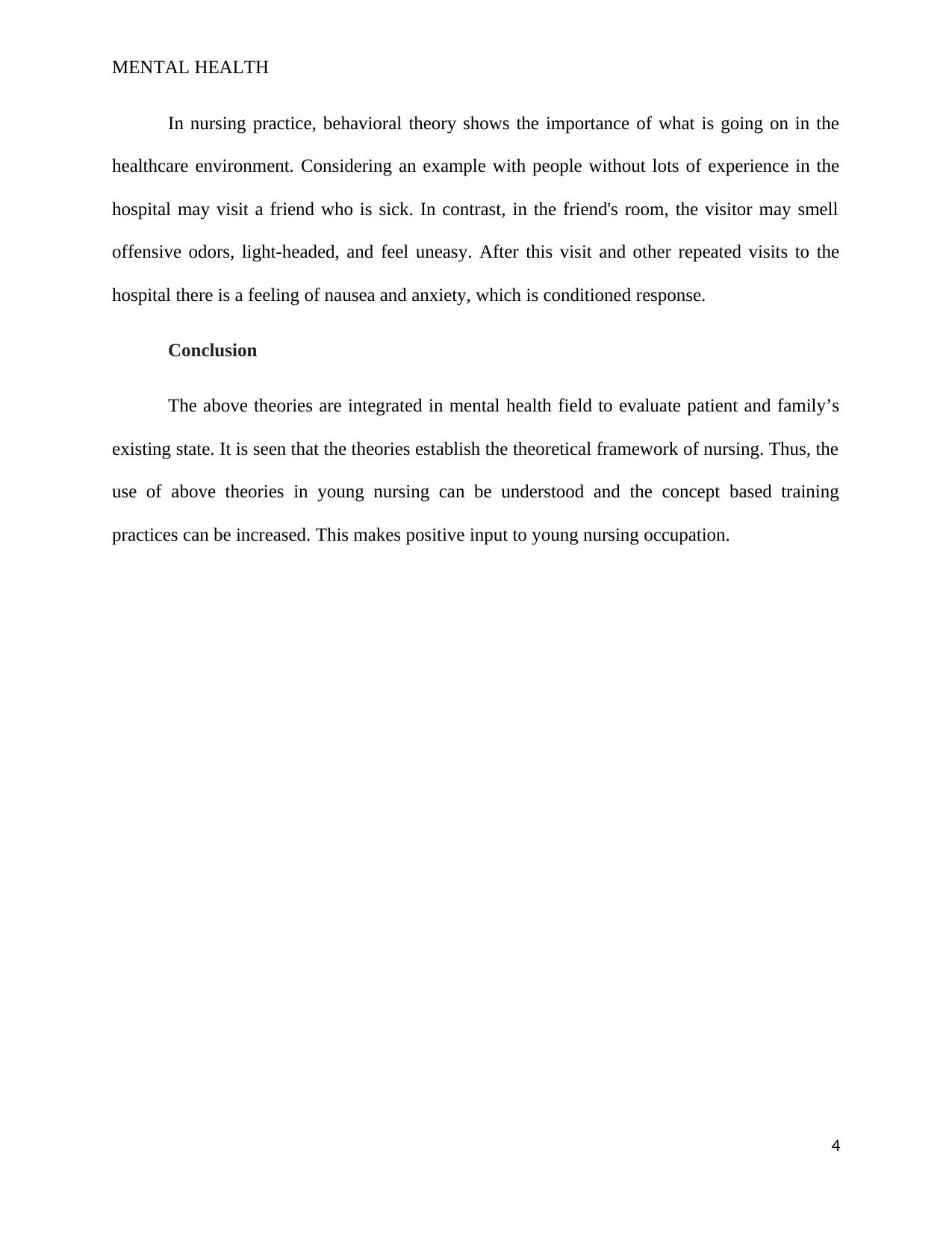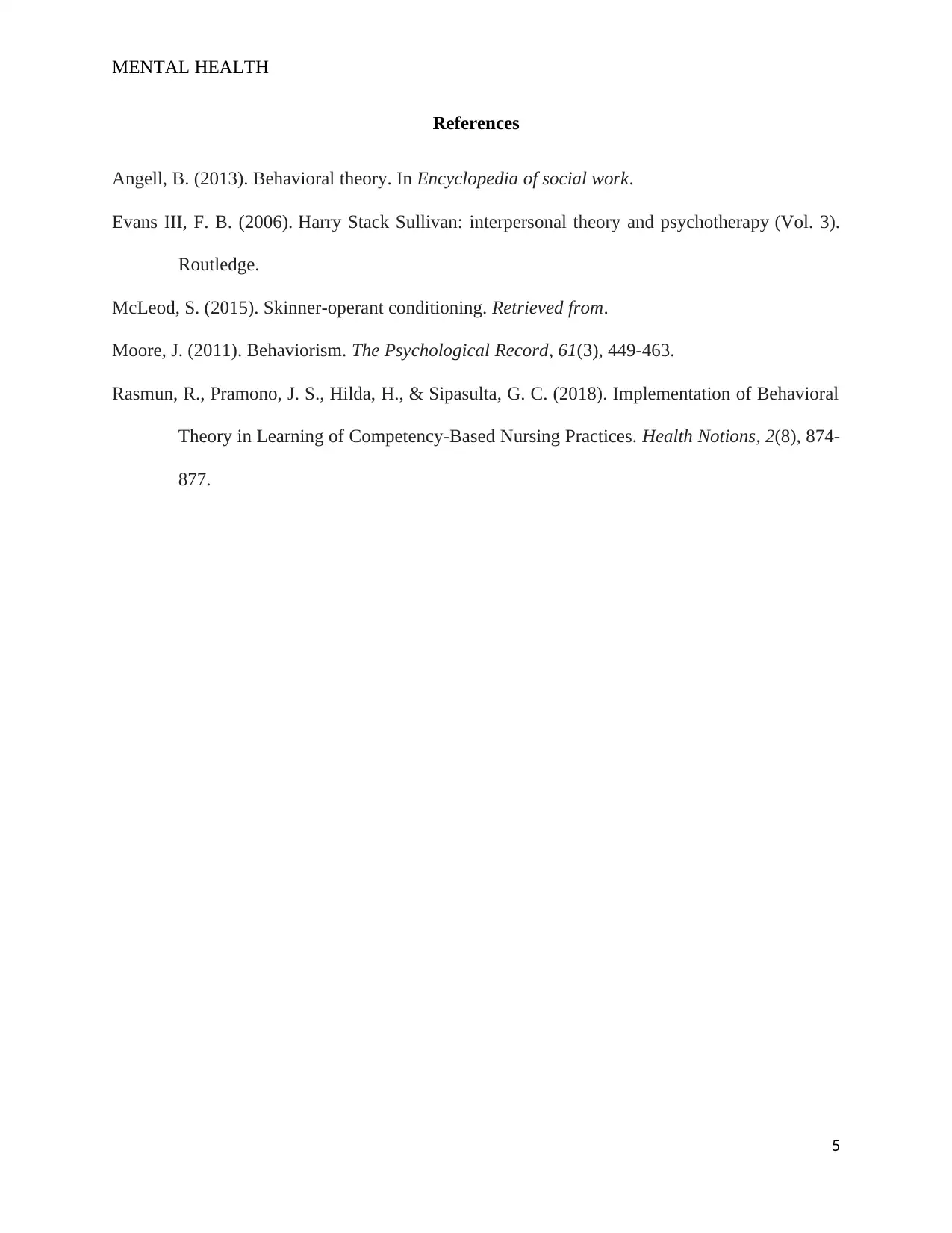Comparing and Contrasting Mental Health Theories in Nursing Practice
VerifiedAdded on 2022/09/22
|5
|822
|44
Essay
AI Summary
This essay provides a comprehensive comparison and contrast of two prominent mental health theories: interpersonal theory and behavioral theory. The paper begins by introducing each theory, including historical context, key figures, and core concepts. It explores the origins and development of interpersonal theory by Harry Stack Sullivan, emphasizing the impact of social forces and interpersonal relationships on mental health. Additionally, it examines behavioral theories, focusing on the contributions of Ivan Pavlov, John B. Watson, and B.F. Skinner, highlighting classical and operant conditioning principles. The essay then delves into the similarities and differences between the two theories, particularly how early experiences and repetition shape behavior. Furthermore, it discusses the practical applications of each theory within nursing practice, with examples of patient scenarios. The paper concludes by integrating the theories to evaluate patient needs and family’s existing state, emphasizing how these theories establish a theoretical framework for nursing and can improve training practices.
1 out of 5










![[object Object]](/_next/static/media/star-bottom.7253800d.svg)